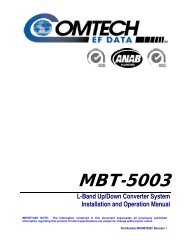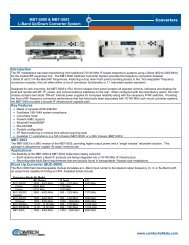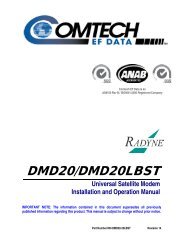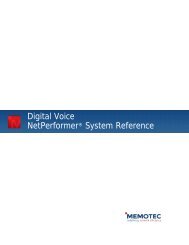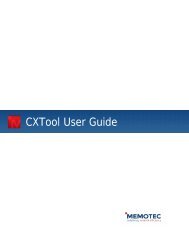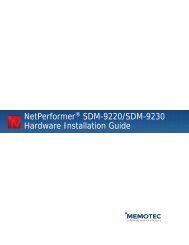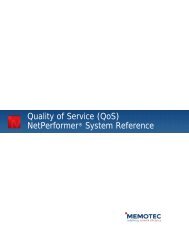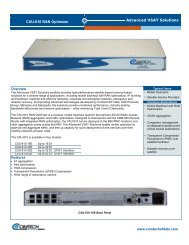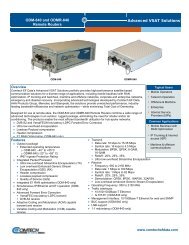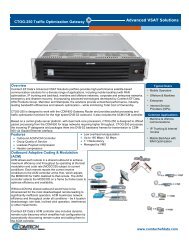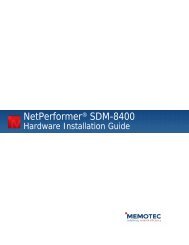ATM Option System Reference - Comtech EF Data
ATM Option System Reference - Comtech EF Data
ATM Option System Reference - Comtech EF Data
Create successful ePaper yourself
Turn your PDF publications into a flip-book with our unique Google optimized e-Paper software.
5.4.16 Fwd digits<br />
SE/PVC Configuration Parameters<br />
Console SNMP Text-based Config<br />
Fwd digits atmpvcVoiceFwdDigits [atmpvc#] VoiceFwdDigits<br />
For switched or autodial activation only.<br />
This parameter takes effect at the receiver site, and specifies which dial digits (if any)<br />
should be forwarded to the attached user equipment. There are three possibilities:<br />
• NONE: No dial digits are forwarded to the attached equipment.<br />
• ALL: The speed dial number and its associated extended digits are forwarded to<br />
the attached equipment. The extended digits may be looked up in the Voice Mapping<br />
Table or manually dialed by the user. For an Autodial port, the source of the<br />
user-dialed extended digits is determined by the Extended Digits Source parameter<br />
configured at the PORT level (described earlier). For a Switched port, refer to<br />
the Extended Digits Source parameter of the Setup Map menu, described later.<br />
• EXT: Only the extended digit string is forwarded to the attached equipment.<br />
Use the Forward Digits parameter when the NetPerformer voice port connects to the trunk<br />
side of a PBX or a CO. If an automated answering system responds to the call, the PBX or<br />
CO can dial the telephone number to connect to a device on the station side.<br />
NOTE: This parameter does not influence the digits that are sent from the local Net-<br />
Performer to the remote NetPerformer. Both the speed dial number and any<br />
associated extended digits are sent to the remote site at all times.<br />
This parameter is not used on voice ports associated with an EIC-1MB card running<br />
Q.SIG signaling. For Q.SIG-to-Q.SIG communications, the Q.SIG signaling stack on the<br />
E1C-1MB card takes care of exchanging the phone numbers. However, the Voice<br />
Mapping Table is still required to perform the proper call routing.<br />
When a non-Q.SIG unit (VFC-03, TIC, EIC with CAS signaling, ISDN-03 card) calls a<br />
Q.SIG device, the Forward Digits parameter should be set to ALL. This means that the<br />
speed dial number will be forwarded, along with any extended digits that were sent by the<br />
originating unit. The EIC-1MB card in turn sends the resultant number (Speed_Dial +<br />
Any_Extended_Digits) to the destination PBX. Then, the PBX will process this number as<br />
if it were received from the CO.<br />
Values: NONE, ALL, EXT<br />
Default: NONE<br />
Memotec Inc. 5-29



